- Expert advice/
- Invites & paper/
- Invitations/
- How to Word Wedding Invitations with No Plus One
- Invitations
How to Word Wedding Invitations with No Plus One
We’ll help you navigate one of the trickier wedding etiquette issues, and teach you how to word wedding invitations with no plus one, or with one, as well as how to decide who’s getting one in the first place.
Last updated July 1, 2025
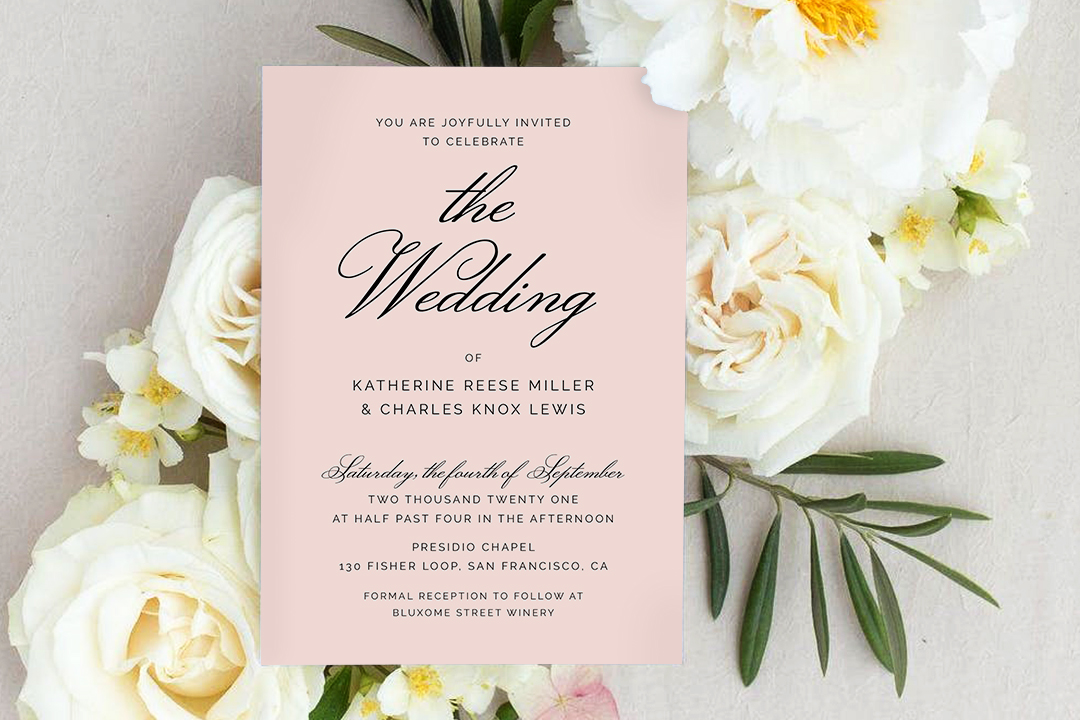
Shop invitations
View allTLDR:
- Your wedding invitation should include all the critical information about the wedding day, convey tone and formality, and indicate how guests should RSVP.
- Invitation wording etiquette includes everything from following general grammar rules to giving extra attention to the wording you use for names and titles.
- Use similar examples for inspiration when writing your invitations to model your wording after.
Basics of no plus one wedding invitation wording
There are some parts of wedding planning that are just, well, awkward. And a lot of these awkward decisions have to do with your guest list. Determining who falls on list A, list B, and who gets a plus-one are just a few of the difficult decisions that can make the wedding guest list feel like something you’d really rather not touch.
We get it, your relationships with close friends and family members often hang in the balance and you and your parents, in-laws, and maybe even your fiancé could have differing views on the list. If you’re struggling, we’ll help you navigate the waters of one of the trickier issues. Zola will teach you how to word wedding invitations without (and with!) a plus-one, plus explain how to decide who’s entitled a guest in the first place.
How to say no plus-ones on wedding website
At Zola, we are all about curating an informative website, so adding your plus-one information is essential. Add information about sticking to your guest list and how you're going about inviting plus-ones. Are they on a case-by-case basis? Will you put "and guest" on the physical invitation or RSVP card? Keep guests informed so that they're in the know.
Who gets a plus one?
Before you even start thinking about how to word your wedding invitations, you have to establish who is getting those coveted plus-one spots. Here are a few general guidelines:
1. Those who are married or engaged
If a guest is married or engaged, the spouse or fiancé should always be invited. Guests who are living together should also be invited together. You can list these couples’ full names on separate lines, starting with the woman’s name.
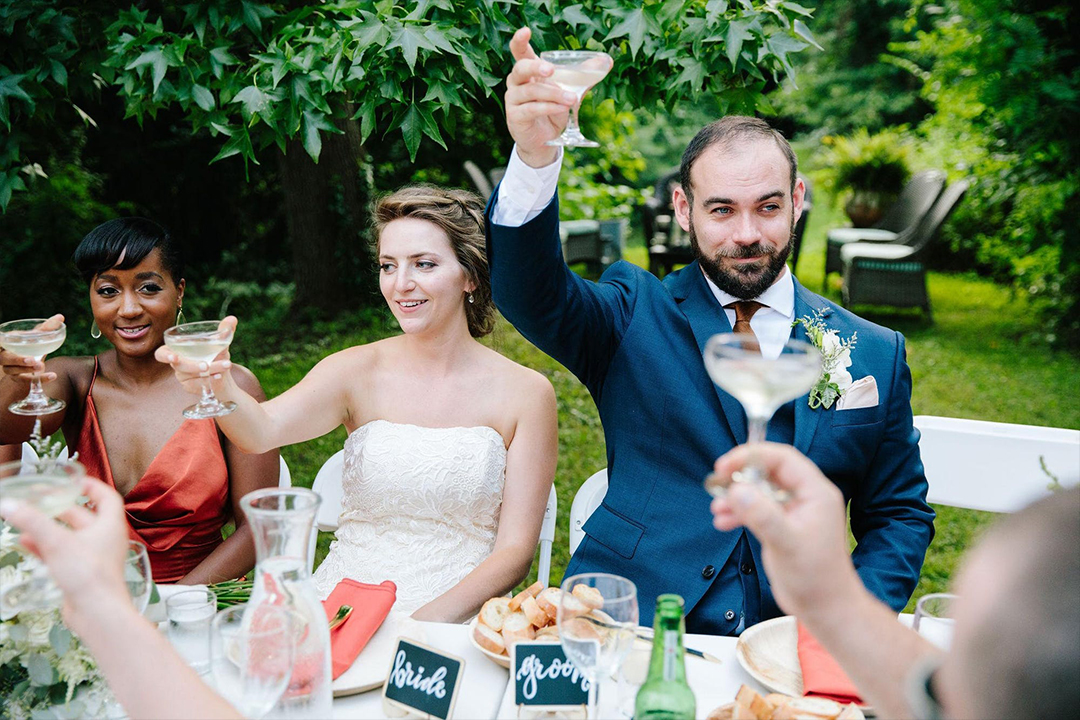
2. Couples in long-term relationships
How long is long? This is up to you and your fiancé, but consider six months as a starting line. Also, it’s appropriate to extend the invite to any significant others that you have met and spent time with. If you set a hard-and-fast rule when it comes to dating couples, it will be easier to field questions when they come.
3. Everyone else on the guest list
You want all of your wedding guests to have a good time on your special day, and there are likely a few on your list that may feel alone or uncomfortable without a plus-one, ie. coworkers, your study-abroad friend, or an old roommate. Letting them bring a date, even if it’s not a romantic partner, will ensure your big day is enjoyable for everyone.
Additionally, if you’re asking your guests to travel for your celebration, adding plus-ones is both appropriate and encouraged. Traveling is always more enjoyable with someone to travel with, so it’s more likely that your guest will attend as well as make a vacation out of it if you allow them to bring a plus-one.
Of course, this is all dependent on two very important factors: budget and space. As your guest list increases, your costs increase accordingly. If the budget is tight, think about setting limits on plus-ones. (Note: The cost of adding one more place setting shouldn’t trump ruining a relationship with your invitee.) Similarly, if space is tight, you may also need to cut back on the plus-ones you dole out. If your venue or caterer has capacity limits, you can always extend plus-ones once you receive regrets.
If you are inviting guests that are single, a plus-one is a nice gesture, but shouldn’t come at the expense of people you wanted to invite but couldn’t due to budget or space constraints.
Plus-one wedding invitation wording
Once you’ve made your decisions on who gets to bring a guest to your wedding day, how do you make it clear to them? Whether your family members or BFFs are seeking extra seats reserved for their friend, here’s how to word wedding invitations with no plus-one or with one:
When you know the plus-one
It is best practice to include the name of your guest’s plus-one on the invitation when you know it. You can include the plus-one on the invitation with the guest, listing his or her name on a separate line below your guest.
Example:
- Mr. Shawn Jackson
- Ms. Lily Caberet
Or, you can send a separate invitation to the plus-one directly. If you can find out their name and address easily by sending a text to your invitee, it will not only affirm their wedding guest but also make the invitation more personal.
Example:
- Mr. Shawn Jackson, 123 Lover’s Lane
- Ms. Lily Caberet, 456 Ranch Road
Are you good friends with the plus-one? If so, they should also receive their own invitation, addressed and delivered directly to them.
When you don't know the plus-one
If you don’t know who your invitee will bring, but want to allow them a plus-one, you can simply add “and Guest” to the envelope.
Example:
- Mr. Harry Stockton and Guest
- Ms. Veronica Lovett and Guest
When you aren't inviting a plus-one
When there’s no plus-one, wedding invitation wording is pretty simple: Only include the name of the guest on the envelope.
Example:
- Mr. Harry Stockton
- Ms. Veronica Lovett

What to do when a guest asks about a plus-one
The odds are good that a few of your more-confrontational guests will bring up the topic of a plus-one directly. You can navigate this scenario in a couple of ways:
1. Stick to your guns.
Did you and your fiancé set hard-and-fast rules when you made your wedding guest list? If so, stick to them. You decided on a certain length of time couples had to be together, or on no plus-ones at all for a reason. If you go making exceptions for one couple, or person, the word may get out, and you may feel pressured to add a few more to your guest list.
If your guest just goes ahead and writes in a plus-one on their RSVP card, you need to address it tactfully. Call them and graciously explain that their plus-one is, unfortunately, not invited. Give a reason like budget or space, or refer back to your hard-and-fast rules to let them know this is the case for everyone.
2. See if there are special circumstances.
Let’s face it, not everything is black and white, and some cases may actually warrant a second look. Maybe a guest you originally didn’t extend a plus-one to got engaged after your invitations went out. In these scenarios, it’s best to call or send a thoughtful text to let them know their nearly-wed partner is also invited.
Or, maybe a friend has recently become much more serious with their partner and you’ve begun to spend more time with the couple. If your wedding guest asks politely if they can bring their SO, use your best judgment.
3. Come back around (if there's room).
Inevitably, some of your guests will regretfully decline. If you receive more “no” RSVPs than you were expecting, it’s okay to extend the invite to plus-ones. If a guest asks for a plus-one and you may genuinely be able to add them down the line, tell them numbers are tight but you would love to have their guest attend and will reach out if anything changes.
Going beyond no plus one invitation wording
Even though there is proper etiquette to follow and feelings to tip-toe around, these tips can help you navigate the wedding invite process, plus-one or not, with ease so you can send your invitations off with confidence.
If you're in the middle of wedding planning and have other sticky situations on the horizon, Zola is your go-to source for getting your big day started off right. From common wedding etiquette questions to avoiding wedding invitation mistakes, stick around and read how to navigate planning your special day.
Shop invitations
View allUp next for you
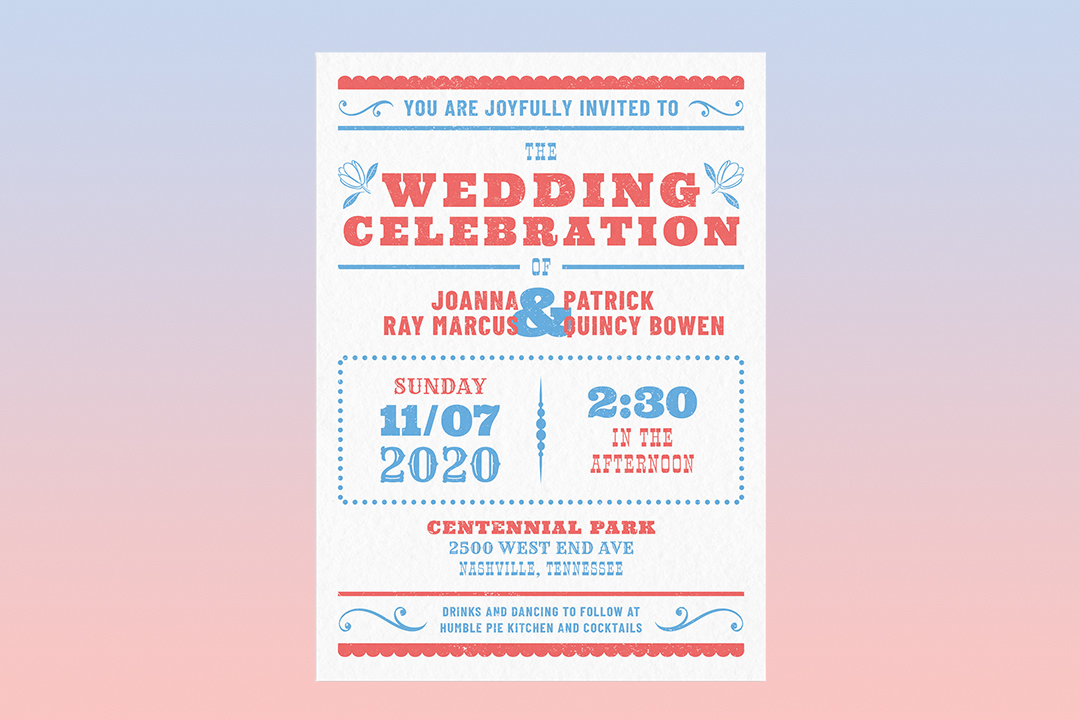
21 Unique Wedding Invitation Ideas
List
We have scoured the web for the most unique wedding invitations on the stationery scene, and we’re sharing them here.

21 Unique Wedding Invitation Ideas
List
We have scoured the web for the most unique wedding invitations on the stationery scene, and we’re sharing them here.

Wedding Invitations: A Guide to Envelopes
Wedding Invitations
A wedding invitation envelope really deserves some attention. So without further ado, let’s celebrate this paper enclosure with everything you ever wanted to know about wedding invitation envelopes.

How to Include Your Wedding Website on Your Invitation
How-To
Wondering how to share your wedding website with guests? Explore etiquette tips for how to share your wedding website on an invitation.
Featured
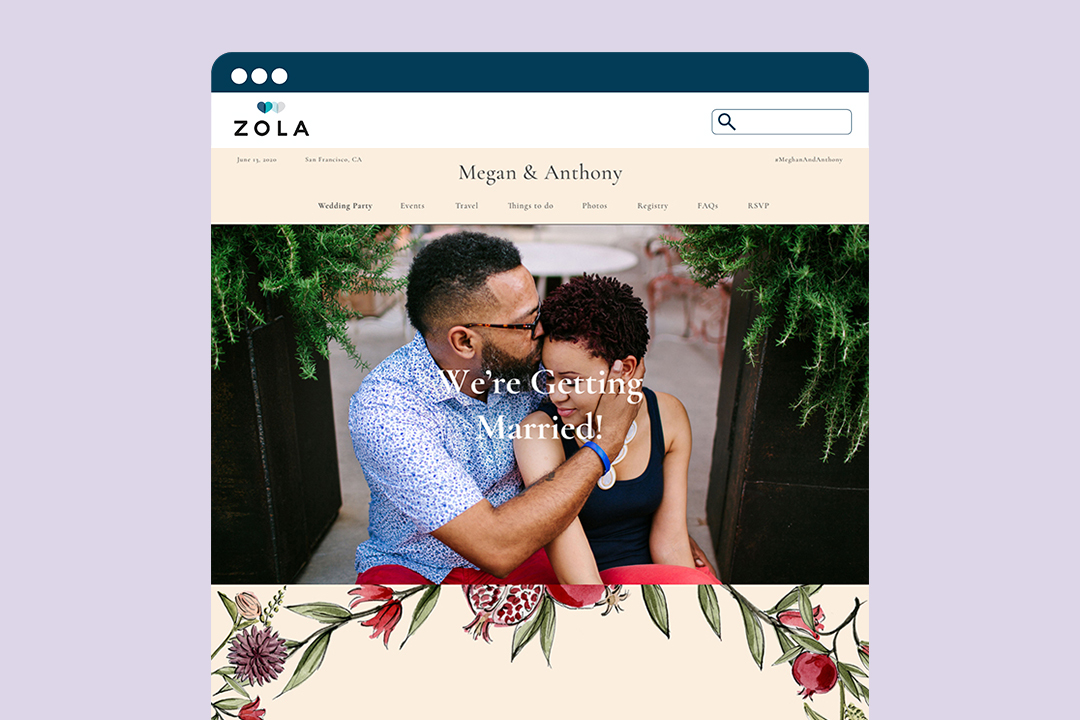
How To Create a Wedding Website: A Complete Guide
How-To
Create a personalized wedding website with our step-by-step guide. Learn how to craft a digital space that shares your love story and wedding details.

8 ‘Will You Be My Bridesmaid?’ Card Ideas
List
We look at eight different card ideas that ask, "Will you be my bridesmaid?"
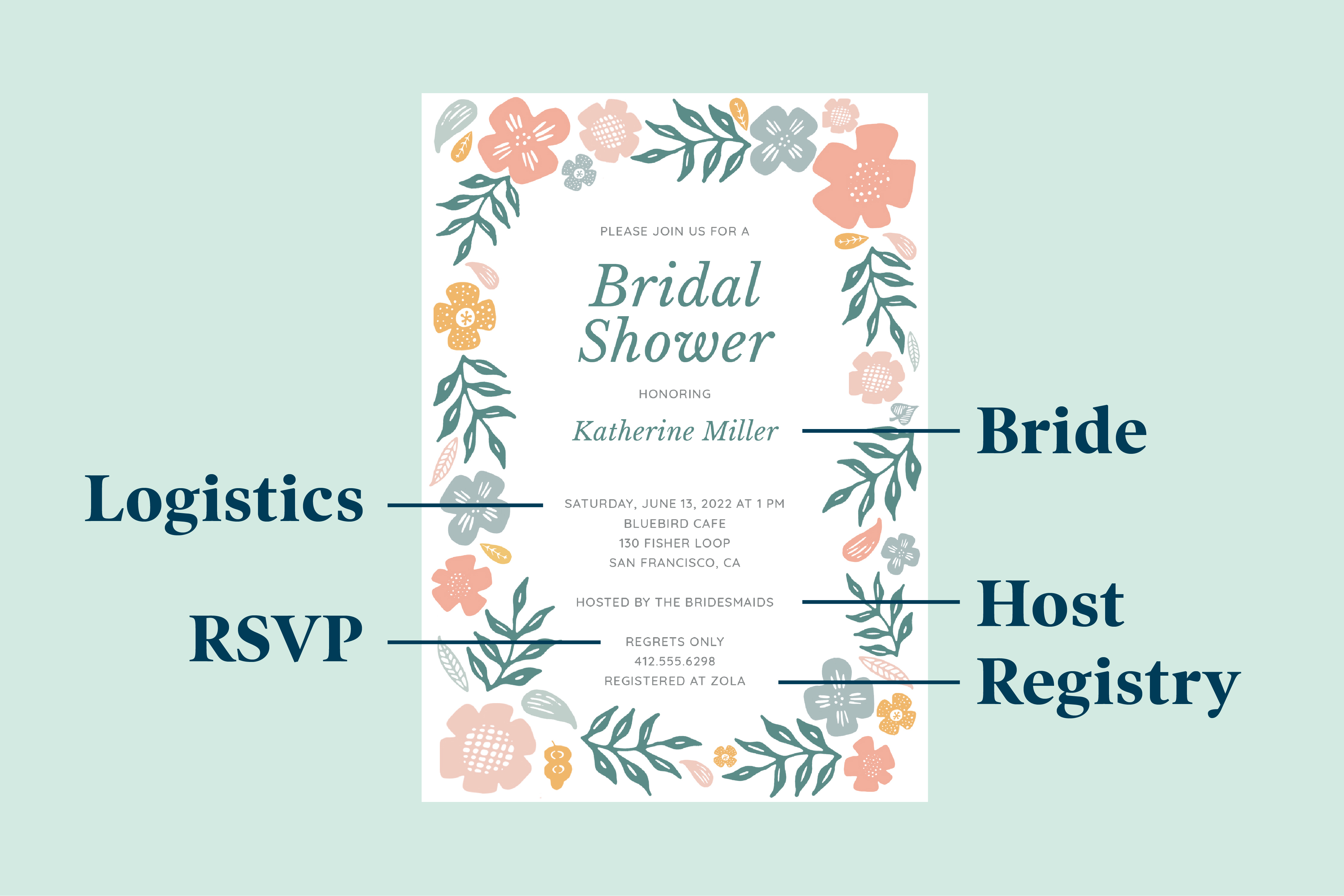
How to Word Bridal Shower Invitations
Inspiration
Not sure how to word your bridal shower invitations? Follow our guide for what to include, template ideas, wording examples, and more.

Unique Wedding Invitation Wording
How-To
Your wedding invitation should speak to your personality. Here are some ideas for unique wedding invitation wording from Zola.
- Expert advice/
- Invites & paper/
- Invitations/
- How to Word Wedding Invitations with No Plus One
Find even more wedding ideas, inspo, tips, and tricks
We’ve got wedding planning advice on everything from save the dates to wedding cakes.
